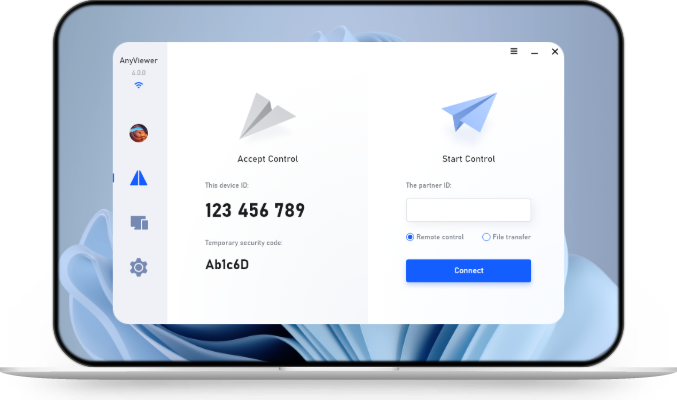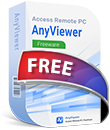Answered: How Does Remote Access Software Work?
What is remote access software? How does remote access software work? This post uncovers the answers and provides detailed information. Besides, it also introduces one of the best remote access software for you.
What is remote access software?
What is remote access software? Remote access software refers to a set of tools and applications that allow users to connect to and control a computer or network from a remote location. This technology enables users to access files, applications, and resources on a distant computer as if they were physically present at that location.
Remote access software is widely used for various purposes, including technical support, troubleshooting, system administration, remote work, and remote collaboration. It helps enhance productivity.
How does remote access software work?
How does remote access software work? The fundamental principle behind remote access software involves establishing a connection between two computers, typically a local (client) computer and a remote (host) computer. This connection enables the local user to interact with and control the remote system through a combination of authentication, secure communication protocols, and desktop-sharing technology.
Various methods are employed to achieve remote access, involving protocols, tools, software, and connections. For example:
- Remote Desktop Protocol (RDP): Developed by Microsoft, RDP is a proprietary protocol used for remote access to Windows-based systems. It allows users to control the desktop interface and transfer files between the local and remote computers.
- Virtual Network Computing (VNC): VNC is an open standard protocol that enables remote desktop control. It works across different operating systems and allows users to view and interact with the graphical desktop environment of a remote computer.
- Secure Shell (SSH): While SSH is primarily used for secure command-line access, it can also be used for tunneling other protocols, including X11 for graphical applications. Tools like X11 forwarding allow for remote graphical application access over an SSH connection.
- TLS/SSL (Transport Layer Security/Secure Sockets Layer): Many remote access solutions use TLS/SSL to encrypt the communication between the client and host, ensuring the security and privacy of data during transmission. This is often used in conjunction with other protocols.
These protocols help establish a secure and efficient communication channel between the local and remote systems. The choice of protocol often depends on factors such as the type of remote access needed, the platforms involved, and the security requirements of the users and organizations.
AnyViewer: Best free remote access software
AnyViewer stands out as an exceptional choice when in search of top-notch free remote access software. Crafted by a proficient technical team, this reliable software guarantees a smooth and effective remote access encounter. Effortlessly taking command of a distant device becomes a seamless process through AnyViewer's user-friendly interface.
What are the benefits of AnyViewer?
Embrace AnyViewer as your premier selection for free remote access software, unlocking a host of compelling benefits:
- Robust Security Protocols: AnyViewer places data security at the forefront, fortifying your account with end-to-end encryption and two-factor authentication, establishing a robust shield for your valuable information.
- Optimized Performance: Revel in the seamless remote access experience that AnyViewer guarantees. With minimal latency and an impressive frame rate of up to 60 FPS, operations unfold swiftly and efficiently during remote access sessions.
- Intuitive User Interface: AnyViewer distinguishes itself with a user-friendly interface, designed for quick adaptation. This intuitive layout minimizes training time, allowing users to navigate the platform effortlessly.
- Cross-platform Flexibility: AnyViewer extends its reach across platforms, enabling seamless remote support connections. Whether linking to a Windows device from another Windows unit or even a mobile device, the software's adaptability enhances usability across diverse platforms.
What are the features of AnyViewer?
Discover the array of features within AnyViewer that cater to the diverse demands of remote access. Here's an exploration of key functionalities:
- Unattended remote access: Effortlessly remote control for unattended computers without being physically present.
- File transfer: Streamline file transfers between local and remote devices, facilitating easy upload and download for efficient document sharing.
- Multi-session: Streamlined organization of multiple remote sessions with a user-friendly interface, boosting productivity.
- Remote Sound: Sync the audio output of the remote device for a fully immersive experience.
- Remote management: Simplify tasks like locking, rebooting, or shutting down a remote computer with AnyViewer's one-click solutions.
- Mobile Screen Mirroring: Effortlessly showcase or share content from iOS or Android devices on a Windows PC, enhancing collaboration.
- Real-Time Communication: Engage in seamless messaging or chat during remote sessions with AnyViewer.
- Multi-Monitor Support: Easily switch between all-monitor and single-monitor displays with AnyViewer for tailored productivity.
How to use AnyViewer effortlessly
How does remote desktop software work? Getting started with AnyViewer is a breeze. Just follow these simple steps:
Step 1. Download and install
Begin by downloading and installing AnyViewer on your computer.
Step 2. Launch and sign in
After installation, launch AnyViewer and sign in using your account credentials.
Step 3. Explore the user interface
Once logged in, familiarize yourself with the user interface.
Step 4. Establish remote session
On your client computer, go to the "Device" section. There, pinpoint the PC you want to control and initiate an instant remote connection with a click on "One-click control."
Step 5. Control and manage the remote computer
Once connected, you’ll have full control over the remote computer as if you were sitting in front of it. You can open files, run applications, transfer data, restart the device, or even adjust display settings. The intuitive toolbar allows quick access to features like screen resolution adjustment, chat, file transfer, and more. Whether for IT support, work-from-home tasks, or remote assistance, AnyViewer makes remote control seamless and efficient.
- ★Tips:
- Enhance your remote desktop experience by considering an upgrade to AnyViewer's Professional or Enterprise plan. Here's what you'll unlock:
- Easily handle multiple unattended access devices with precision.
- Manage several remote sessions at once, making multitasking simpler.
- Move large files between devices quickly for better efficiency.
- Ensure private access to remote devices by dimming the screen and disabling the keyboard.
- Explore additional features designed to enhance your remote desktop experience.
- ...
The bottom line
Unlocking the mechanics behind remote access software, exemplified by tools like AnyViewer, is pivotal. Delving into this technology not only unveils its functionality but also paves the way for seamless and secure remote connections. Optimize your remote access experience – download now.

